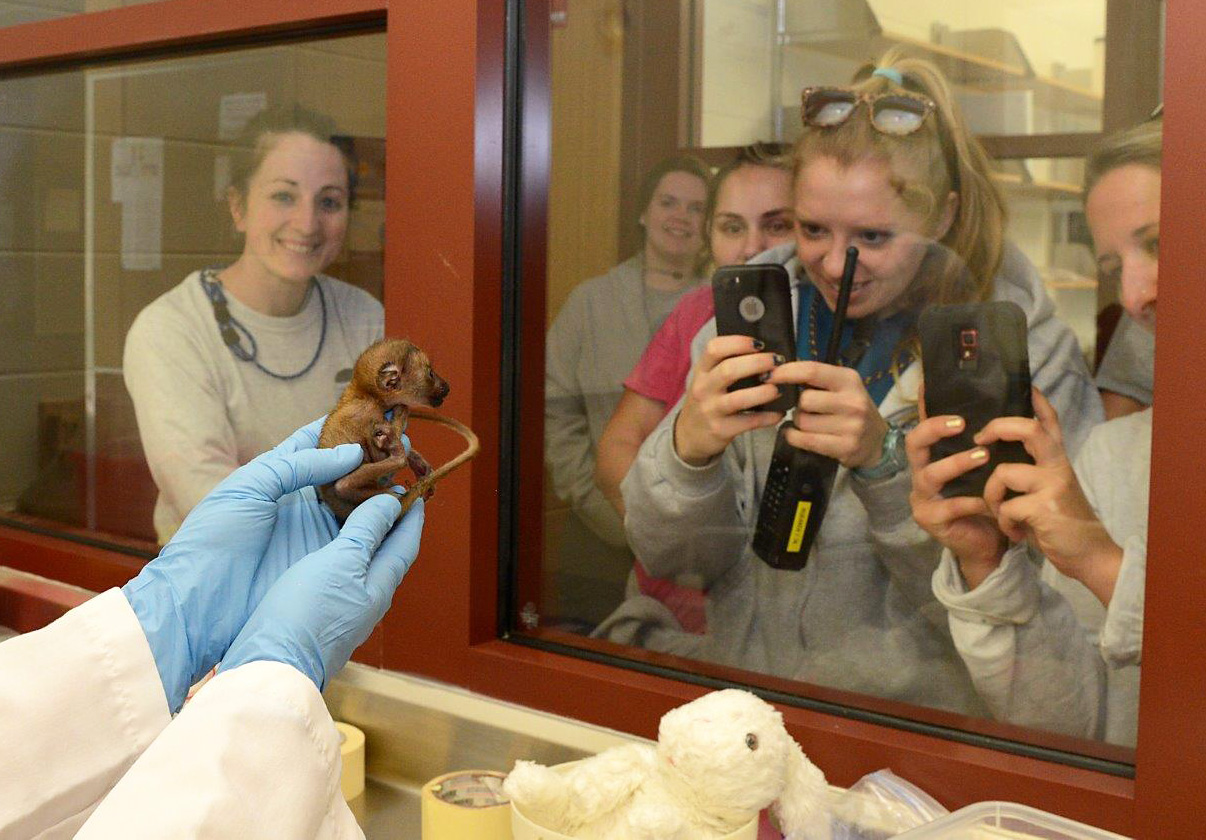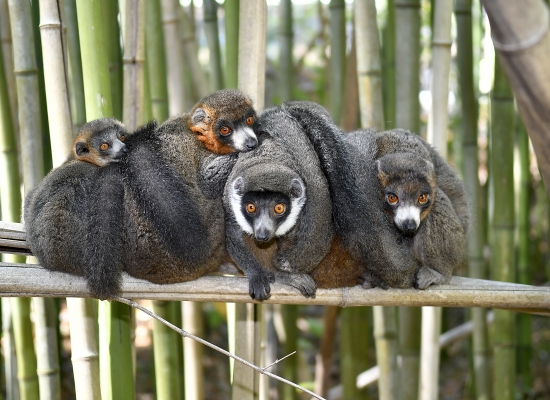By Rhiannon See, 2022-23 Undergraduate Fellow in Communications
Published September 15, 2022

The DLC is one-of-a-kind in its expert care of lemurs. No other zoo or research center—except us—is accredited by both research and animal welfare organizations, including the Association for Assessment and Accreditation of Laboratory Animal Care (AAALAC) and the AZA. These accreditations testify that the Duke Lemur Center meets the highest standards of animal care.
This summer, the Duke Lemur Center completed an inspection through the Association of Zoos and Aquariums (AZA) Accreditation Commission and received an extremely rare perfect score.
As of November 2021, only four facilities had received a perfect score in the AZA’s nearly 50 years of accreditations. The DLC is proud to be the fifth.
Not only did the visiting committee find no major or minor concerns, it also recognized 18 practices and achievements they agreed were “especially well done and notable.”
“It’s highly unusual for a facility to go through our certification process without inspectors finding at least a few things that need to be addressed,” says Denny Lewis, AZA Senior Vice President of Accreditation Programs. “But in this case, inspectors found nothing but excellence, and zero non-compliant issues—a truly remarkable accomplishment!”
“I am so proud of what we have achieved, and I couldn’t be more grateful to our staff and volunteers who are the absolute best at what they do,” says the DLC’s Executive Director, Greg Dye. “The Lemur Center may be a small organization, but we lead the way when it comes to conserving and protecting the lemurs of Madagascar. I couldn’t be prouder.”

“The entire DLC team—every staff member and volunteer—is committed to providing the best animal care and welfare to every single animal in our care,” says DLC Executive Director Greg Dye. “They are the absolute best at what they do. This rare achievement is the result of their hard work and uncompromising commitment to upholding the highest standards.”
What is the AZA?
The AZA is the accrediting body for the top zoos and aquariums in the United States and 12 other countries. “AZA certification is considered the ‘gold standard’ within the profession,” explains Denny.
Fewer than 10% of the approximately 2,800 animal exhibitors licensed by the United States Department of Agriculture are AZA accredited. Look for the AZA logo whenever you visit a zoo or aquarium. This is your assurance that you are supporting a facility dedicated to providing excellent care for animals and a better future for all living things.

AZA accreditation provides the DLC with access to resources needed to better manage its lemur colony and to strengthen the North American safety net for lemurs by exchanging animals with other accredited facilities. This ensures that the facilities the DLC’s partners with have a high standard of animal care and welfare, just like we do.
AZA inspection & accreditation
The inspection process includes a detailed application and an on-site inspection by a committee of professionals who review animal care, veterinary care, safety for animals and visitors, conservation efforts, and more.
“The AZA’s standards are the highest in our profession,” says Greg. “The application and required documentation take several months of effort even before the team of inspectors arrives to evaluate our operations and programs. Staff recruitment and development, what kind of food we provide the animals, how we train and enrich the animals, our maintenance program, the types of research we support, our efforts to protect wild lemurs and their forests, our financial situation—everything is put under a microscope to ensure compliance.”

“The Lemur Center does amazing work with lemurs and is a highly valued certified related facility of the AZA,” says Denny Lewis, AZA Senior Vice President of Accreditation Programs. “The DLC has been certified by the AZA since 2016, and recently underwent a full review and inspection that they passed with flying colors!”
Notable practices and achievements
AZA’s visiting committee recognized 18 practices and achievements that they found to be “especially well done and notable.” They are:
- Institutional commitment advancing an exemplary lemur research and conservation science program.
- Long history of impactful in-situ conservation programs in Madagascar.
- Widespread leadership in AZA scientific, husbandry, veterinary, and conservation breeding programs.
- Dedicated, experienced leadership mentoring young career scientists, veterinary students, and animal care staff.
- Loyal, experienced, long-tenured, and well-trained volunteers.
- International resource for collaborative, non-invasive research from the physiology of torpor to lifetime studies of cognitive change.
- A model Diversity, Equity, Accessibility, and Inclusion (DEAI) program using rubrics for improving diversity of prospective interns, enhancing educational collaboratives with community partners, and measuring progress achieving goals.
- Paid animal care internships providing access to diverse, marginalized community members.
- Beautiful old growth forested habitats enjoyed by free-ranging lemurs.
- Healthy, well-cared-for breeding population of the world’s most endangered family of mammals.
- Highly enriched animals using a comprehensive evaluative and tracking program.
- $8M state-of-the-art, well-equipped research and animal health center.
- $2M investment replacing all indoor and outdoor animal holding pens.
- Significant financial subsidy of DLC operations through two years of Covid-related budget shortfalls while also avoiding any staff furloughs or lay-offs.
- Extensive animal training program meeting veterinary, research, and husbandry needs.
- Engaging guest experiences in escorted tours behind the scenes, along an exhibit trail, and in the forests.
- Multi-faceted animal welfare assessment program using an online database accessed by smart phones.
- Masterplan under development mapping out significant program and facility expansion over five to 10 years.

